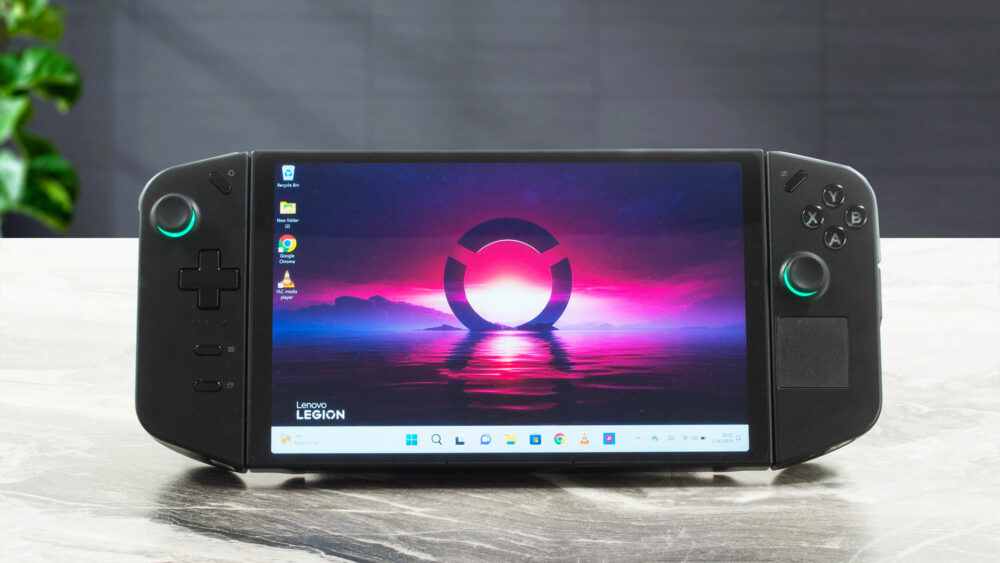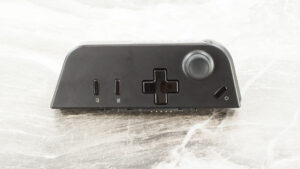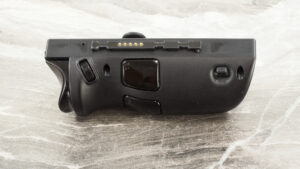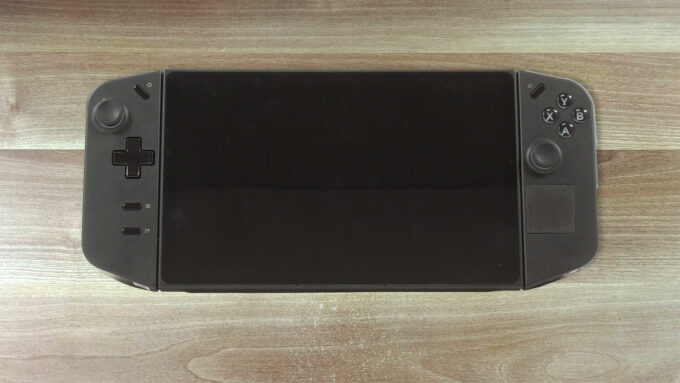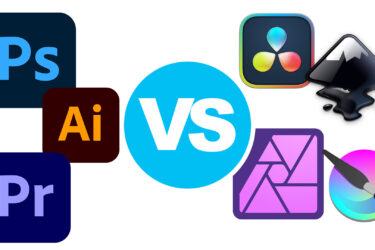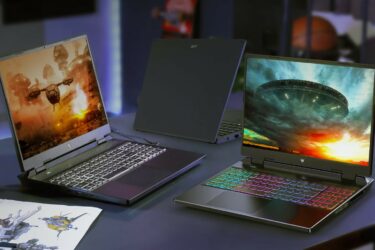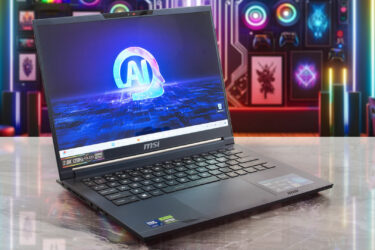Lenovo Legion Go review – Surpassed Our Expectations with Stellar Gaming Performance and Unrivaled Display
Design and construction
Well, the Lenovo Legion Go looks a bit similar to the Nintendo Switch. Of course, the device in front of us is much bigger in size. The body is made of glass fiber-reinforced polycarbonate while the controllers are plastic. The weight is 854 grams with the controllers attached and if you detach them, the result is 640 grams for the main body (that is also called “gamepad”). This means the full-blown package is more than 200 grams heavier than the ASUS ROG Ally (2023). The profile thickness with the side controllers is 40.7 mm and 20.1 mm without them.
The machine is surprisingly grippy which is good news if you plan to use it for long hours of gaming. The weight distribution is spot on but the hefty mass becomes a problem after an hour or two of usage.
If money isn’t a problem, the Legion Glasses are a great compliment to the console. In short, when you connect them to a fully functional USB Type-C port (at least USB 3.2 Gen 1 + DisplayPort 1.2) they’ll act as a virtual display. The two Micro-OLED screens on both sides deliver a big-screen experience in front of your eyes.
The picture quality is good (1080p@60Hz) so you can use the glasses for watching movies or playing games. It’s a bit challenging to find the right position of this wearable product without seeing blurry edges. Thing is, these glasses have to be as close as possible to your eyes to see a crystal-clear picture. You have to choose the right size nose pad, then adjust it, and maybe you can also use the anti-slip adapters for better wearing stability.
They are a bit heavy (96 grams) but that’s fine since you can lay on your couch in a comfortable position to enjoy some content for a long time without feeling neck strain (of course, you have to find the right wearing position for yourself). The built-in speakers are a nice extra.
You can tune the brightness and the volume of the speakers via the Lenovo software. Low Blue Light Mode is also available. All these functions can be controlled with the aid of the built-in buttons on the inside of the earpieces.
When the controllers are detached, the Legion device looks like a typical tablet.
The kickstand is a nice addition. Thanks to it, you can place the console on your desk, connect the charger, and maybe you can attach an external controller or wireless mouse + keyboard combo for a desktop-like experience during gaming.
As you can see, the two controllers lead to a thicker profile.
The detachable units are full of different switches and buttons. Aside from the typical LT / RT controls + joysticks on both sides, on the left, you get a D-pad and shortcuts for “Menu” and “View” functions. On the right, there is a small mouse pad (that is super useful for navigating through the Windows menus) and a “Legion R” button that summons on-screen menus for performance, display, and general device control.
On the backside of the right controller is placed a scroll wheel and the bottom is home to an FPS mode switch. When this function is active, you can place the unit on a controller base for a mouse-like experience thanks to the optical sensor on the lower side. This sounds great on paper but in real life, the situation is different. Using this method for FPS games feels weird and unnatural. On the bright side, this mode is suitable for Web browsing.
On the bottom plate, we can spot a kickstand and two small ventilation grills that reveal part of the cooling system. The hot air is being exhausted through a vent on the upper side of the gadget.
Ports
On the top, you can see the power button, an Audio combo jack, a microSD card slot, and a multi-purpose USB4 connector. On the bottom, there is an FPS mode switch, a mouse sensor, and another multi-purpose USB4 port.
